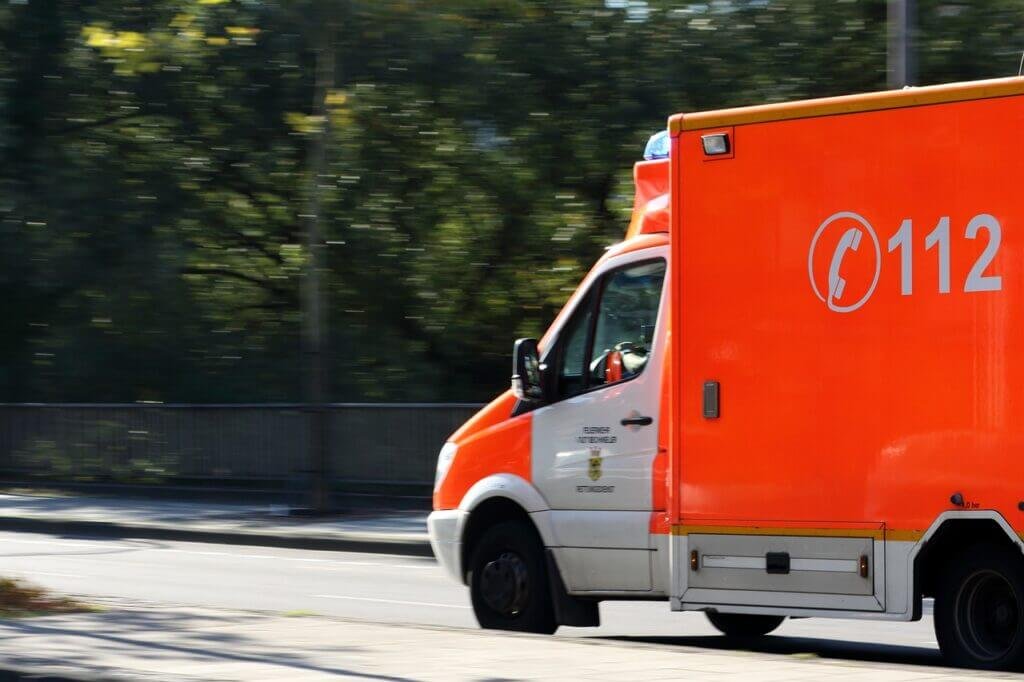So you’ve come to the realization that it’s important to be prepared for emergencies, but you’re not sure where to start. Well, fear not, because this article is here to guide you on your journey to becoming a pro at emergency preparedness. Whether it’s natural disasters, power outages, or unexpected situations, being ready for the unexpected can make all the difference. So grab your notepad, put on your thinking cap, and let’s start prepping for emergencies!

Assessing Risks and Need
Identify potential emergencies
When it comes to emergency preparedness, the first step is to identify potential emergencies that could occur in your area. Consider factors such as natural disasters (e.g., earthquakes, hurricanes, floods), technological disasters (e.g., power outages, chemical spills), and public health emergencies (e.g., pandemics, disease outbreaks). By understanding the specific risks in your location, you can better prepare for them.
Consider geographical location
Geographical location plays a significant role in determining the types of emergencies you may face. For example, if you live in a coastal area, you may be more prone to hurricanes or tsunamis. If you live near a fault line, earthquakes may be a higher risk. By considering your geographical location, you can tailor your emergency preparedness plan to address the specific challenges that may arise.
Research specific risks
Once you have identified potential emergencies and taken your geographical location into account, it is essential to research and understand the specific risks associated with each type of emergency. For instance, if you live in an area prone to wildfires, you should learn about fire safety and evacuation procedures. By researching specific risks, you can gather valuable information to develop strategies and precautions to minimize the impact of an emergency.
Evaluate personal needs and vulnerabilities
Emergency preparedness is not a one-size-fits-all approach. It is crucial to evaluate your personal needs and vulnerabilities to create an effective emergency plan. Consider factors such as age, disabilities, chronic illnesses, or medication requirements. Understanding your specific needs will enable you to make the necessary arrangements and include relevant supplies in your emergency kit.
Creating an Emergency Plan
Establish a communication plan
Communication is key during emergencies when staying connected with your loved ones can be challenging. Establishing a communication plan is vital to ensure everyone’s safety and well-being. Identify a designated emergency contact who can serve as a central point of communication for you and your family members. Determine alternative methods of communication, such as text messages or social media, as traditional phone lines may be overloaded or unavailable.
Designate meeting points
In situations where immediate evacuation is not required, designating meeting points is essential for reuniting with family or friends. Identify both local meeting points, such as a nearby park or community center, and out-of-town meeting points in case you cannot return home. Communicate these meeting points with your loved ones and ensure everyone knows the designated locations.
Arrange emergency contacts
In addition to establishing a central communication contact, it is crucial to arrange emergency contacts for different scenarios. Make a list of important phone numbers, including emergency services, local authorities, healthcare providers, and family members. Store this list in a readily accessible location and make sure every family member knows where to find it.
Create a household emergency kit
A household emergency kit is a crucial component of your preparedness efforts. It should contain essential supplies to sustain you and your family for at least 72 hours. Include items such as non-perishable food, water, medications, flashlight, batteries, a first aid kit, and personal hygiene items. Tailor the kit according to the needs of each family member, including items for infants, pets, or individuals with specific medical requirements.

Developing Emergency Skills
Learn basic first aid
Having basic first aid knowledge can be lifesaving during emergencies when immediate medical assistance may not be readily available. Consider taking a first aid course to learn essential skills such as CPR, wound management, and how to respond to different medical emergencies. This knowledge will empower you to provide immediate care until professional help arrives.
Acquire CPR certification
Cardiopulmonary resuscitation (CPR) is a critical skill that can make a significant difference in saving someone’s life during cardiac emergencies. Enroll in a CPR certification course to gain the confidence and skills necessary to perform CPR correctly. Regularly update your certification to ensure you remain current with the latest techniques and guidelines.
Take self-defense classes
Emergency preparedness goes beyond physical supplies; it also extends to personal safety. Taking self-defense classes can equip you with the skills and confidence needed to protect yourself and your loved ones during emergency situations. While we hope you never have to use these techniques, being prepared can provide peace of mind.
Practice fire safety precautions
Fires can rapidly escalate, causing substantial damage and posing a significant threat to life and property. By practicing fire safety precautions, you can reduce the risk of fires starting and ensure a swift response if one does occur. Install smoke alarms on every floor of your home, develop a fire escape plan, and regularly inspect and maintain fire extinguishers.
Securing Essential Supplies
Stock non-perishable food items
In an emergency, access to fresh food may be limited. Stock up on non-perishable food items that have a long shelf life and require little to no preparation. Canned goods, dried fruits, nuts, and granola bars are excellent options. Ensure you rotate and replace these items periodically to maintain their freshness and nutritional value.
Store an adequate water supply
Water is a fundamental necessity for survival, and it is crucial to have an adequate supply during emergencies. Store at least one gallon of water per person per day for a minimum of three days. It is also essential to have water purification methods or filters in case your water supply becomes compromised.
Prepare emergency cash reserves
During emergencies, electronic payment systems may not be operational, making cash a valuable resource. Set aside an emergency cash reserve in small bills and coins to cover immediate needs such as purchasing essential supplies or accessing services during power outages. Store this reserve in a secure location within your emergency kit.
Have a backup power source
Power outages are a common occurrence during emergencies, and having a backup power source can ensure you have essential services available. Consider investing in a generator or alternative power options, such as solar panels or portable battery packs, to keep critical devices or medical equipment functioning. Follow all safety guidelines and ensure you have the necessary fuel or charging capabilities.

Organizing Important Documents
Gather identification documents
In emergencies, having access to identification documents is crucial for various purposes, including establishing your identity and accessing essential services. Gather important documents such as passports, driver’s licenses, birth certificates, and social security cards. Store them in a waterproof and fireproof container or keep digital copies in a secure, password-protected location.
Collect medical records
Access to medical records is essential for receiving appropriate care during emergencies, especially if you have pre-existing conditions or require specific medications. Make copies of medical records, prescriptions, vaccination records, and insurance information. Keep physical copies in your emergency kit and digital copies in a secure online storage or encrypted USB drive.
Backup digital files and passwords
In today’s digital age, it is crucial to protect and back up important digital files and passwords. Use secure cloud storage or an external hard drive to backup important files such as financial records, insurance information, or family photos. Additionally, keep a record of important passwords in a secure location or consider using a password manager for easy access.
Create a comprehensive inventory
Creating a comprehensive inventory of your belongings can be invaluable for insurance purposes in the event of property damage or loss. Document your possessions through photos or videos, noting their approximate value and any unique or valuable items. Store this inventory along with your important documents, ensuring it is accessible in case of emergencies.
Preparing Shelter and Transportation
Secure and reinforce the home
Your home should serve as a safe haven during emergencies. Take steps to secure and reinforce your home, such as installing sturdy doors, windows, and locks. Consider reinforcing your roof, securing loose objects, and clearing debris or potential hazards in your surroundings. Regularly inspect and maintain the structural integrity of your home to minimize the risk of damage during emergencies.
Prepare a designated shelter area
In certain emergencies, sheltering in place may be the safest option. Designate a specific area in your home as a shelter, such as a basement or an interior room without windows. Ensure this area is stocked with necessary supplies such as food, water, battery-operated radios, and a first aid kit. Familiarize all family members with this designated shelter area and conduct regular drills to practice entering and securing the space.
Maintain emergency exit routes
While sheltering in place may be appropriate for some emergencies, others may require evacuation. Maintain clear and accessible emergency exit routes from your home. Identify at least two different evacuation routes and ensure all family members know how to navigate them safely. Regularly check and clear these pathways to avoid obstructions that could hinder a speedy evacuation.
Plan for transportation options
In the event of an emergency that requires evacuation, having transportation options readily available is essential. Assess different transportation methods based on your circumstances and needs, such as a personal vehicle, public transportation, or making arrangements with neighbors, family, or friends. Consider practicing evacuation drills to familiarize yourself with the process and determine the most efficient routes.
Establishing Community Connections
Join a community emergency group
Being part of a community emergency group can provide valuable support and resources during emergencies. Research and join local organizations or community groups that focus on emergency preparedness and response. These groups often provide training, resources, and a network of support that can enhance your preparedness efforts.
Build relationships with neighbors
Establishing connections with your neighbors is vital in times of crisis. Get to know your neighbors and build a sense of community. In emergencies, neighbors can support each other by sharing resources, information, and assistance. Consider organizing neighborhood meetings or establishing communication channels to stay connected and informed.
Stay informed with local authorities
Local authorities play a crucial role in emergency preparedness and response. Stay informed by signing up for emergency alerts and notifications from local government agencies. Familiarize yourself with evacuation routes, emergency shelters, and procedures specific to your area. Regularly check official websites, social media accounts, and local news sources for important updates and guidance.
Engage in community training programs
Many communities offer training programs and workshops focused on emergency preparedness. Take advantage of these opportunities to acquire valuable skills and knowledge. Attend seminars on topics such as disaster response, first aid, and community resilience. By participating in community training programs, you can enhance your preparedness efforts and contribute to the overall safety and well-being of your community.
Maintaining Health and Wellness
Keep vaccinations up to date
Vaccinations are essential for preventing and controlling the spread of certain diseases, especially during public health emergencies. Stay up to date with routine vaccinations recommended by healthcare professionals. Additionally, be aware of any specific vaccinations or booster shots recommended for your geographical area or based on the type of emergency risks you may face.
Have a regular exercise routine
Regular exercise is crucial for maintaining physical and mental well-being, and it can also contribute to your overall resilience during emergencies. Engage in a regular exercise routine that suits your fitness level and preferences. Incorporate activities that can help enhance your stamina, strength, and flexibility. Remember to consult with a healthcare professional before starting any new exercise regimen.
Manage mental health and stress
Emergency situations can be stressful and overwhelming, so it is important to prioritize your mental health and well-being. Practice stress management techniques such as deep breathing exercises, meditation, or engaging in activities that bring you joy and relaxation. Seek support from a mental health professional if needed, and encourage open communication within your support network.
Get sufficient sleep and rest
Adequate sleep and rest are vital for maintaining optimal physical and mental functioning. During emergencies, it may be challenging to stick to regular sleep patterns, but making an effort to prioritize rest is crucial. Create a calm and comfortable sleep environment, establish a bedtime routine, and aim for a consistent sleep schedule as much as possible.
Staying Informed and Prepared
Stay updated on current events
Staying informed about current events is essential for recognizing potential hazards and understanding the evolving situation during emergencies. Regularly check reliable news sources, official government websites, and local emergency management agencies for updates. Be cautious of misinformation and rumors, and rely on verified sources of information.
Follow government emergency guidelines
Government authorities play a critical role in managing and responding to emergencies. Familiarize yourself with emergency guidelines and protocols issued by local, state, and national government agencies. Understand the recommended actions to take during different types of emergencies, such as evacuation procedures, shelter-in-place guidelines, and evacuation routes.
Participate in emergency drills or exercises
Practice makes perfect, and the same applies to emergency preparedness. Participate in emergency drills or exercises organized by local authorities, community groups, or workplaces. These drills simulate different emergency scenarios and allow you to practice your response and assess the effectiveness of your emergency plan. Use these opportunities to identify areas that may need improvement and make necessary adjustments.
Regularly review and update emergency plan
Emergency preparedness is an ongoing process, and your emergency plan should be regularly reviewed and updated. Set aside time every six months to reevaluate your plan, taking into consideration any changes in your household, your surroundings, or new information about potential risks. Update contact information, replace expired supplies, and ensure that everyone is familiar with the plan and their assigned roles.
Implementing Practical Measures
Check and maintain emergency supplies
Regularly check your emergency supplies to ensure they are ready for use. Check expiration dates on food, water, medications, and batteries, replacing any items that have expired. Review the contents of your emergency kit and consider if any additional items may be necessary based on your evolving needs or changing risks. Restock any used items promptly to maintain a constant level of preparedness.
Renew certifications and training
Certifications and training in areas such as first aid, CPR, or self-defense are valuable assets during emergencies. Regularly renew certifications to stay current with the latest techniques and best practices. Consider attending refresher courses or advanced training sessions to enhance your skills and knowledge. Maintaining active certifications ensures you are prepared to handle emergencies effectively.
Conduct regular safety inspections
Safety inspections are a proactive measure to identify and address potential hazards before an emergency occurs. Regularly inspect your home for safety concerns such as faulty wiring, gas leaks, or structural damage. Identify and rectify any issues promptly to minimize the risk of accidents or additional damage during emergencies. Consider engaging professionals for more comprehensive inspections if needed.
Practice emergency scenarios
Practicing emergency scenarios can help you and your family members become familiar with the necessary actions and responses. Conduct regular drills, simulating different emergency situations and scenarios. Practice evacuating your home, using emergency supplies, or implementing communication plans. These hands-on exercises will improve your ability to react quickly, calmly, and effectively during real emergencies.
By following these comprehensive steps, you can enhance your preparedness for emergencies. Establishing an emergency plan, securing essential supplies, organizing important documents, preparing shelter and transportation, establishing community connections, maintaining health and wellness, staying informed and prepared, and implementing practical measures will contribute to your overall safety and resilience. Remember, emergency preparedness is an ongoing process, and regular review and practice are key to ensuring you and your loved ones are prepared to face any unforeseen event.


